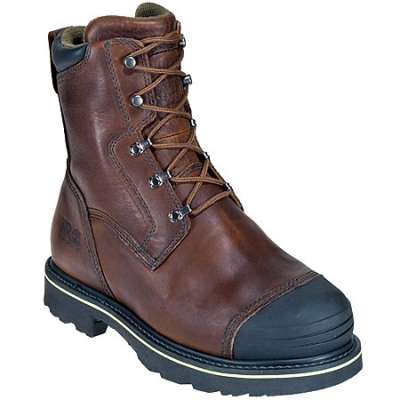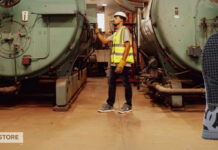No matter what kind of work you do, protecting your feet needs to be a priority. Otherwise, all it takes is one mistake – one accident – and you could be sidelined and unable to get the job done.
Fortunately, work footwear has come a long way since the days when simply dropping the wrong tool could mean a broken bone. The focus is now placed on creating work boots that inspire confidence with every step you take, no matter what kind of surface you’re walking on at your job.
The interiors of modern men’s and women’s footwear have also been given its due. After all, “safety” is as much about comfort and ergonomics as it is about having the right barrier between your feet and the outside world.
Still, manufacturers have continued to outdo themselves. Where once steel toe boots were the height of foot protection, now you can benefit from some truly futuristic forms of science.
Nanotechnology
Aside from steel, you can find work boots made of aluminum alloy and carbon fiberglass. They provide tremendous protection without adding too much extra weight.
However, the newest advancement in safety toe boots belongs to nanotechnology. You read that right. What was once a term reserved for physicists is now something you should expect to see more and more of when it comes to what you wear on your feet.
Nanotechnology generally refers to the science of working with individual atoms and molecules. While the subject is nearly 60 years old, it wasn’t until the scanning tunneling microscope was invented in 1981 that scientists could actually begin studying its application.
The nanometer
This field of science works with nanometers. One inch is 25,400,000 nanometers long. Another way to think about this is that a single piece of newspaper is 100,000 nanometers thick. Comparing a nanometer to a tennis ball is the same as comparing a tennis ball to Earth!
Why is nanotechnology important?
Alright, you got a free trivia lesson from Working Person’s Store, but you may be wondering what nanometers have to do with your demanding workday.
Thanks to nanotechnology, manufacturers can manipulate the materials in work boots at this incredibly minute level. The result means lighter safety toe footwear with better protection and durability.
If you had one of those scanning tunneling microscopes we brought up earlier, you’d be able to get a closer look at what the future of this protective footwear looks like.
For work boots, this means using carbon nanotubes to create a lightweight and strong way to guard your toes. At the nano-level, you’d see a beehive-like pattern wrapped into a cylinder. Somewhere between 10 and 50 nanometers across, these nanotubes may not be huge, but their impact on the comfort, support, and protection of your feet will be.
While the type of material being used obviously plays a big role in the finished product, it’s the ability to create these complex patterns at such a minuscule level that really make all the difference.
Intricately weaving carbon nanotubes together will create a result that’s stronger than just about anything else on the market (and also meets ASTM standards, of course). That strength can be further bolstered by adding a fiberglass resin to the pattern.
Examples of footwear featuring nanotechnology
If you’re ready to start wearing the future on your feet, check out these two great examples we sell on our site:
- Wolverine Men’s 10513 Composite Toe EH Waterproof Tarmac FX Boots
- Timberland Men’s PRO Boots 99524 FR Warrick Smelter EH Alloy Toe Boots
When success on the job site depends on the health of your feet, you have to take your choice in work boots seriously. Just like other technology evolves to improve our daily lives, nanotechnology is here to keep up with your busy lifestyle to give you the best protection possible.




